Rubjerg Knude Lighthouse
On the road between Lønstrup and Løkken you will find one of Denmark's most famous landmarks, Rubjerg Knude Lighthouse. The extremely popular excursion destination, visited every year by more than 250,000 guests, has been towering over the knot since 1899.
IN For many years, the lighthouse has been on the path to going into the sea, as is already the case for the rubble from the café, the lighthouse master's residence and the museum building. These were previously part of the experience when you visited the Rubjerg Knude Lighthouse, but as with so much else on the Rubjerg Knude, it has been consumed by the sand drift.
However, the lighthouse's importance for Lønstrup and North Jutland is so great that Hjørring Municipality ordered a relocation of the lighthouse in 2019, so that you can also enjoy an excursion to Rubjerg Knude and the view from the top of the lighthouse in the years to come.
See the wild sanding and fabulous views of Rubjerg Knude:
Hiking route and walk to the lighthouse
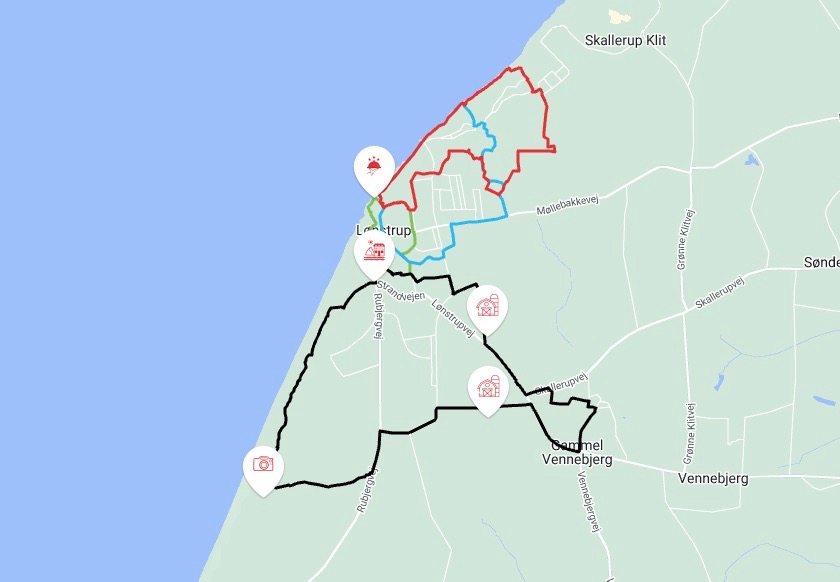
If you want to hike from Lønstrup town to the lighthouse, you can follow the Nordsøstien or set out on the 11 km long black clover in Lønstrup, which, in addition to passing the lighthouse, also takes you past Vennebjerg Church and Mill as well as several cozy farm shops, such as Lophave Hereford.
Relocation of Rubjerg Knude Lighthouse in 2019
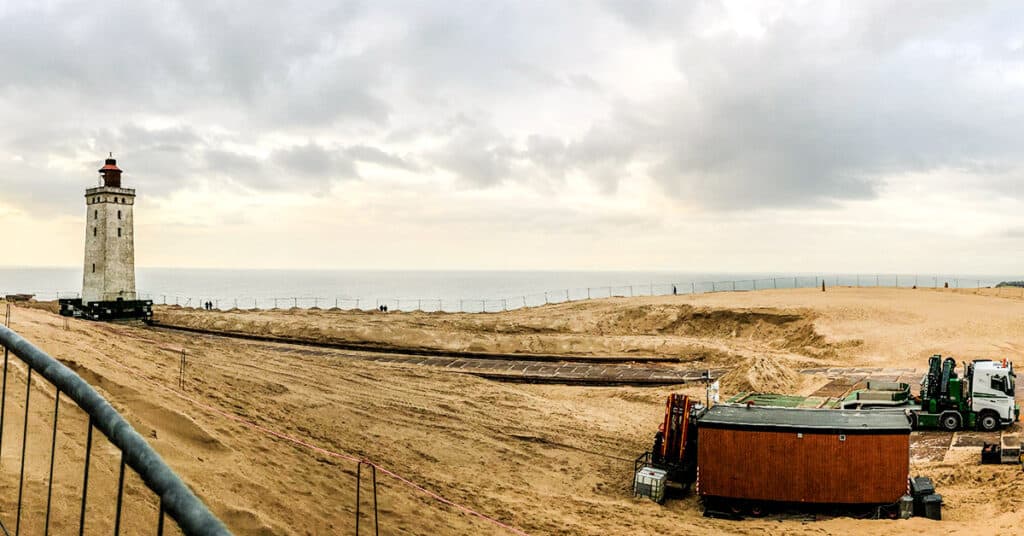
For a long time it has been discussed whether Rubjerg Knude Lighthouse should be moved or allowed to crash into the sea. There have been disagreements, but at the end of 2018 it was finally decided to move the lighthouse 60-80 meters into the landscape, so that the lighthouse can act as excursion destinations and tourist magnet for the area for many years to come.
In May 2019, it was decided that the local mason Kjeld Pedersen was to move the lighthouse. A task the mason have never done before:
- I might as well say it as it is. I've never tried to move a lighthouse before, but I know I've got the best people to help me, the mason has told a local newspaper.
Until August 14, 2019, the Rubjerg Knude Lighthouse was open to the public at its original location. After that, the area was blocked off, and in week 43 the Mason's team is moving the lighthouse 60-80 meters further into the landscape.
On 22 October, the move was carried out under the close attention of new media outlets worldwide, and master bricklayer Kjeld became a Danish owner.
On 16 November, a grand re-opening party was held, and after that it was again possible to take the trip up to the top of the lighthouse.
Date of the relocation: October 22, 2019 starting approx. at 9.
Reopening: November 16, 2019 at 16, where there will be a great inauguration party.
The history
The prospect of a dramatic fate was unpredictable when in 1900 a lighthouse was built on Rubjerg Knude's highest point, about 60 meters above sea level. With over 200 meters out to the coastal slope and with little sign of sand escape, one can hardly blame the builders for not anticipating the problems.
However, only a few years after the lighthouse was put into service, problems began. The buildings sheltered the fine sand that was blown up from the steep hillside. Before long, dunes had formed between the lighthouse and the sea, and the lighthouse master's vegetable garden and the well was filled with sand.
To dampen the sand, the dune was planted with mare straw - with the result that the dune simply grew larger. The more one planted, the more the dune grew. Within a few decades the sand lay so high that it was sometimes impossible to see the light from the sea.
Already in the 1920s large quantities of sand had to be driven away, and by the early 1950s the dune had grown so much that the ships could no longer hear the fog signal.
At one point there were considerations of an elevation of the lighthouse, but they were abandoned. On August 1, 1968, the lighthouse was extinguished for the last time.
The lighthouse is 23 meters tall and was from the beginning equipped with its own gas plant for use in lighting and operation of fog horns. It was believed that light made from grease from oil had a better ability to penetrate in foggy weather. The light could be seen at a distance of up to 42 km.
In 1906 the gas was replaced by petroleum, and in 1934 a contract was signed with the DC power plant at Liver Mill to supply electricity.
Working with the lighthouse
The lighthouse was manned from the start by a lighthouse master, a lighthouse assistant and a lighthouse keeper. The work was often tiring - especially during the first years of gas operation. When the weather was stormy it was important to look for ships in distress. The birds that had flown towards the lens house were to be collected for the Zoological Museum. Machines had to be kept in working order, the buildings had to be chalked and painted inside and out, and the sand kept from the door.
The coastal degradation causes the cliff to move further and further inland and the sand dune is constantly changing. In 1992, the fight against the sand was completely abandoned and the sand was allowed to "eat" the lighthouse buildings.
OpdagDanmark's tips for Rubjerg Knude
- Visit Rubjerg Knude at least once and preferably at different seasons. The scenery changes completely and the area is also wonderful in the winter.
- Many choose the obvious route - park in the usual parking lot and walk via the road directly to the lighthouse. Try to make the trip to Rubjerg Knude Klitplantage, located a little further south of the well-known parking lot. Here you will experience the amazing landscape in a different way - and wander through an old cemetery and old tombstones.
- A visit to Rubjerg Knude can be combined with dining and/or staying at Villa Vest
Practical informations
- Parking: You will find a large car park at Fyrvejen 110, 9480 Løkken
- Opening hours: It is open 24 hours a day, every day of the year
- Tickets and admission: Free
Frequently asked questions
Construction began in 1899, and in 1900, from the first time, one could experience the light cone from the lighthouse extending beyond the North Sea.
23 meters.
The lighthouse can be visited around the clock, 365 days a year.
Yes, it is 100% free.
Yes. There is free parking. From here it is 300 meters to the lighthouse.
Unfortunately no. Wheelchair access is not recommended. As a walking difficulty, however, you can get close via the gravel road from the parking lot. This, however, stops at the foot of the sandbank on which the lighthouse stands.
The number of guests is not monitored, but it is estimated that the place is visited by 250.000 people On-site.
The lighthouse is to be relocated on Tuesday, October 22. Start approx. pm. 9 and approx. 10 hours ahead.

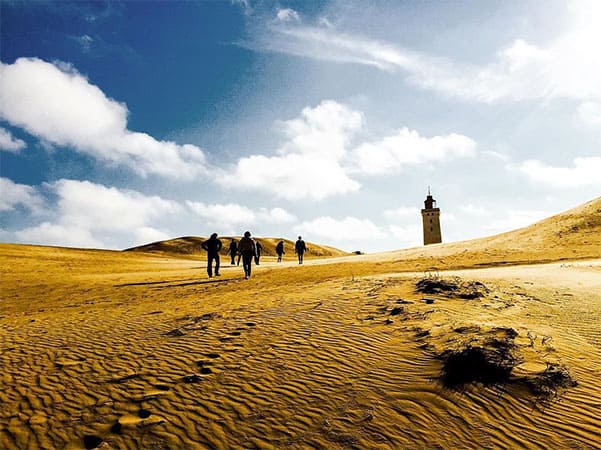
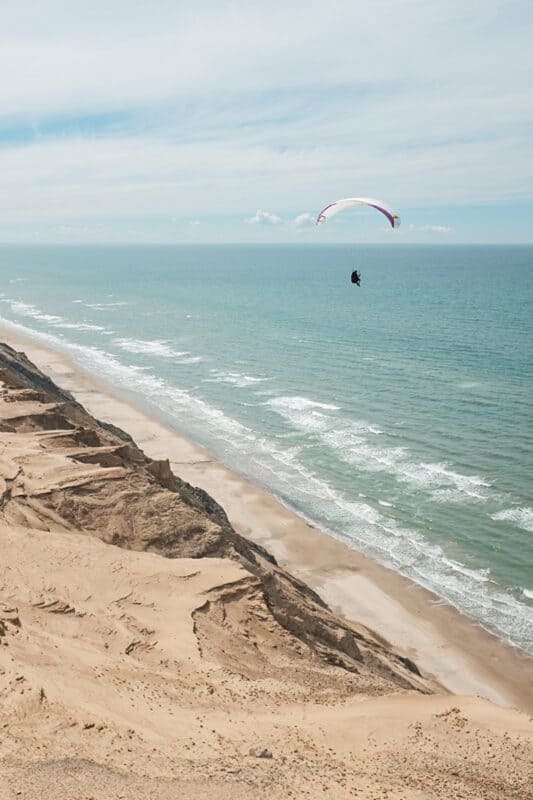
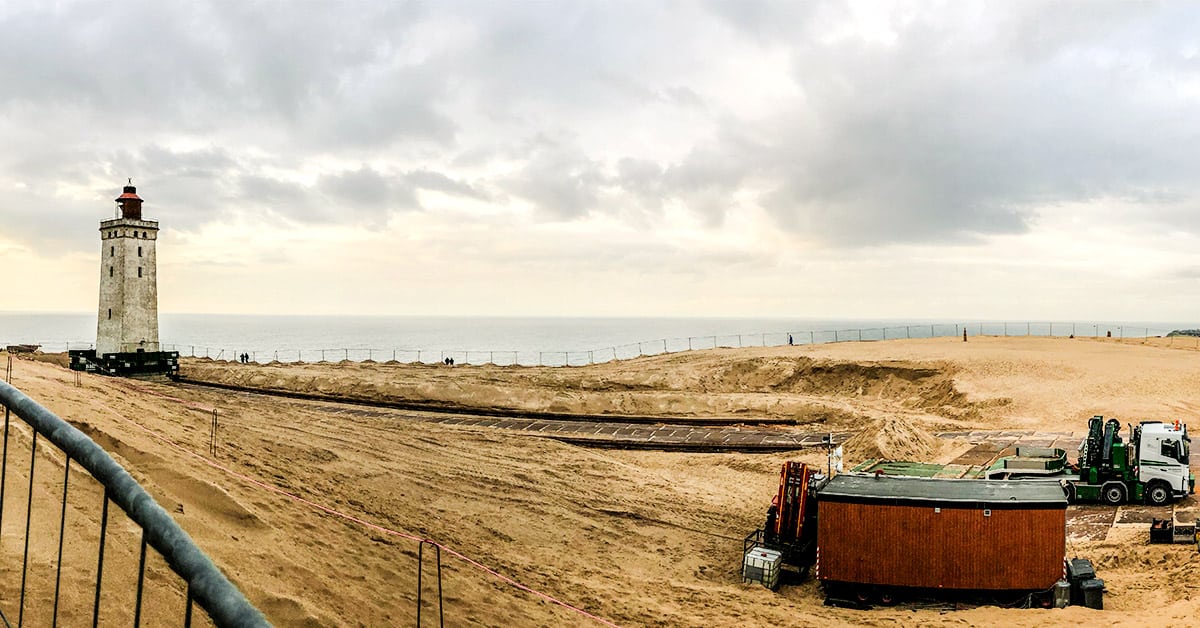

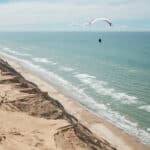
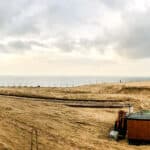
Weg und Aussicht unvergleichlich großartig!
I come here every year since 1960. I was 16 years old at the time! Noch heute beeindruck mich der Leuchtturm und die Landschaft rundherum!! Just today I wandered from Lønstrup aus bis zur "Rudbjerg Knude". Andrea aus Husum/ North Frisia
Price
How much does it cost to move that guy.
Finance law has allocated 5 million
Good story
Very exiting. However, how deep down is the socket?
Great initiative
I've coming up there since I was 12 and now i'm 70.
I went there last year with family from Canada and now they are following the move from a far.
Will go again in the summer I hope.
It vill be great.
Exiting project
Great place and very exciting project. Since I would very much like to watch the move itself, I would like to know if a date has been set?
Anne
Exiting story
I visited the lighthouse this summer and had a great experience partly by seeing how much it had changed compared to my last visit 15-20 years ago. But also to see the preparations for the move of the lighthouse - I'm thinking of attending the move in October.
Is the move still happening in week 43?
Amazing place and history
It is absolutely amazing to visit the lighthouse and hear its history. And I can add that there is a tractor with a cart, called “Knuden”, that drives up to the sandbank where the lighthouse stands. It transports people as needed.